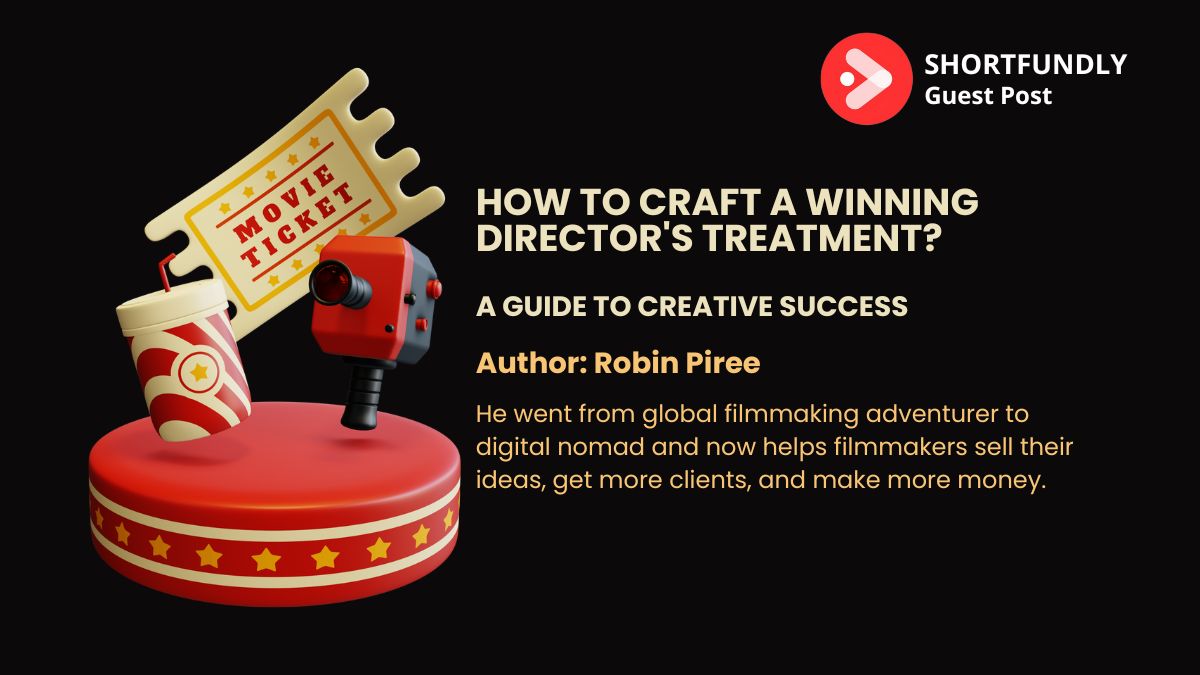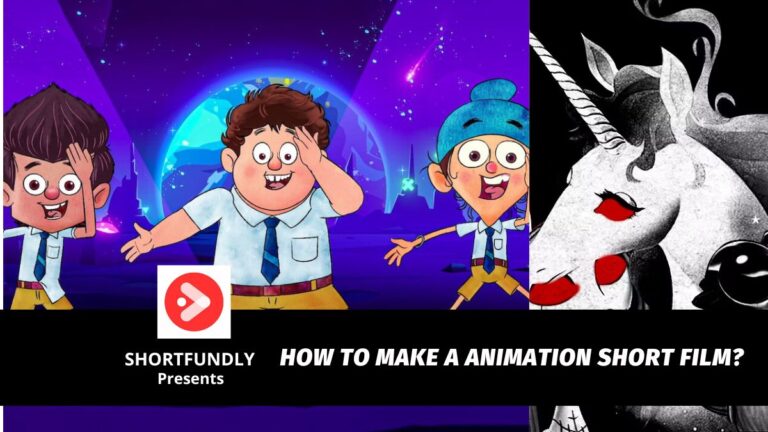Table of Contents
A director’s treatment is a visual and written representation of your creative vision. This
blueprint guides the creative transformation of an idea into a compelling film, commercial,
documentary, music video, fashion film, or TV pilot.
For many filmmakers, creating a director’s treatment is an art form. To help you create treatments
that win new jobs, we’ll share the secrets in this blog to make your treatments stand out and
resonate with producers, production companies, and clients.
What is a Director’s Treatment?
Director’s treatments are detailed documents created by directors in the pre-production phase to pitch their ideas for a feature film, TV pilot, fashion film, documentary, commercial, or music video.
Treatments are digital documents that include a vibrant mix of writing, stunning images, and sometimes even sound elements, representing the director’s vision for the project. The goal of a director’s treatment is to translate the director’s ideas to their first audience of creative partners, the crew involved, and project investors.
9 Key Elements of a Winning Director’s Treatment
Creating a compelling director’s treatment involves incorporating several key elements to effectively communicate every detail of a director’s vision and persuade others of the project’s potential.
Here are the essential foundational components to include:
- Clear Storytelling: Every successful director’s treatment should include a straightforward story explanation. Your treatment should clearly explain the narrative arc of the project (preferably in a three-act structure: beginning, middle, and end).
- Your Unique Perspective: A good director’s treatment should explain what makes your take on the story different and how that specific approach will help your client get their desired outcome. To do that, you should share your unique point of view and how you see things differently. This is what sets your treatment apart from others.
- Emotional Tone: The director’s treatment should explain how you want the audience to feel after watching the finished product. Talk about the emotions you want to bring out in your film and how you want to achieve that visually, whether it’s excitement, sadness, joy, or suspense.
- Pacing and Structure: Explain how the story will unfold in your treatment writing. Will it be fast-paced with lots of action, or are you planning to edit the final film slower and more focused on the characters? This helps people understand the flow of your movie.
- Character Details: Go beyond just the plot and talk about the characters. What are these people in your project like? What are their backgrounds? And what kind of people do you have in mind regarding the casting?
- Visual Style and Art Direction: A good director knows that visuals speak louder than words. You can include mood boards, color palettes, and references to existing films, commercials, music videos, or art that align with your stylistic approach. If other movies or TV shows are similar to your idea, mention them. This can help people understand what you’re aiming for.
- Music and Sound Design: Music videos and films alike rely heavily on sound. Describe your ideas for the soundtrack and sound design and how they enhance the narrative and mood.
- Production Practicalities: Address the nuts and bolts of your project’s production – how the budget considerations have resulted in specific creative choices, potential locations, and any logistical challenges and solutions you have in mind.
- Personal Connection and Inspiration: Share your personal connection to the project. What drew you to it? How does it resonate with your life experiences or artistic inspirations?
Leveraging Director Treatment Templates
While every project demands a unique approach, director treatment templates can be invaluable tools. These templates provide a safety net for beginners and a time-saving tool for experienced directors.
They offer a structured framework, ensuring you cover all essential elements of the pitching process without getting lost in the creative whirlwind.
However, the real magic lies in creating, personalizing, and animating these templates with your story, vision, and passion.
How to Use Director Templates Effectively
- Select the Right Template: Various templates are available, each suited to different types of projects – from commercials, feature films, and documentaries to music videos. Choose one that aligns best with your project or visual stylistic approach.
- Customize for Your Project: A template is just a starting point. The goal should be to infuse it with your personal style, creative vision, and the specific needs of your project. This customization transforms a standard template into a compelling director’s treatment.
- Balance Structure with Creativity: While templates provide structure, don’t let them stifle your creativity. Use them as guides, not rigid frameworks. Your treatment should reflect your unique vision, not just tick boxes.
- Seek Inspiration, Not Replication: Look at templates and director treatments from other successful directors to understand how they conveyed their ideas. However, remember the goal is inspiration, not replication. Your treatment should be distinctly yours. A template is just the canvas; you are the artist who brings it to life.
- Regular Updates and Revisions: As your project evolves, so should your treatment. Templates make it easier to go back and revise details, ensuring your treatment remains aligned with your evolving vision.
7 Tips for Creating a Winning Director’s Treatment
Creating a winning director’s treatment involves more than just filling in the blanks. Here are some tips to help you make a treatment that really stands out:
- Understand Your Story Well: Before writing your treatment, ensure you understand the story. Consider what makes it unique and how you can bring that out in your film.
- Use Pictures and Examples: Words are important, but pictures can sometimes tell a story better. Use images, drawings, or examples from other movies to help explain your ideas.
- Keep It Clear and Simple: You want people to understand your ideas easily, so keep your writing clear and to the point. Don’t use too many complicated words or too much technical language.
- Show Your Passion: Let your excitement for the project show in your treatment. If you’re excited about the film, it’ll excite others too.
- Be Ready to Explain More: Sometimes, people will have questions about your treatment. Be ready to explain your ideas in more detail or talk about other ways to do things.
- Get Feedback: Getting someone else to read your treatment before you show it to producers or clients is always a good idea. They can give you feedback and help you make it better.
- Practice Makes Perfect: Remember, the more treatments you write and design, the better you’ll get at it. Each treatment is a chance to learn and improve.
By following these tips, you’ll be able to create a treatment that looks good on paper and grabs the attention of the people you want to impress.
Conclusion
Creating a winning director’s treatment is more than just fulfilling a job requirement; it’s about bringing an idea to life, conveying a story, and sharing your vision with the world.
Embrace the process with openness and enthusiasm. Be willing to explore new ideas, accept constructive feedback, and collaborate with others.
Your creative spirit is the driving force behind your treatments, infusing them with originality and passion that can resonate with producers, clients, and, ultimately, the audience.
In this ever-evolving landscape, a well-crafted treatment can be the key that unlocks doors to new opportunities and adventures. It’s your voice in a crowded industry, a chance to stand out and be heard.
So, write with conviction, create with passion, and let each treatment you develop be a testament to your journey and a stepping stone to your next great adventure in the world of film.








